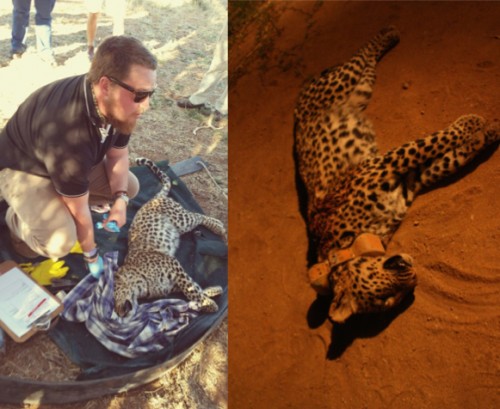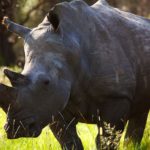By Martina Polley, Conservation Action Trust

A farmer has shot a leopard, which was collared for research, in the Boesmanland area in the Northern Cape earlier this month.
The leopard, which was collared by the Landmark Foundation (LF) in August, was the only collared and tracked leopard in the area.
“We were informed that the farmer and his son were out on Friday, hunting at night and they saw eyes in the night and shot at it, killing this magnificent female leopard. They claim it was an accident,” says the LF.
The project, which is based in the Eastern, Northern and Western Cape, offers participating farmer’s compensation for livestock losses from collared predators, including the farm in question. These losses are verified through GPS coordinates tracked on the collared leopards. This is to assist in preventing leopard persecutions.
The LF was established to respond to human-wildlife conflict on farms across South Africa, where wild predators, such as leopards, are being wiped out in an effort to protect livestock. Lethal predator controls, such as hunting, snares, gin traps and poisoning are still rampant on farms across South Africa, despite the proven success of non-lethal predator control methods.
Through collaring predators, the LF are able to study predator populations and their distribution to better negate human-wildlife conflict with local farmers and conserve wild predator populations.
A 2014 report in a peer reviewed scientific publication found farmers in the Eastern Cape incurred less livestock and financial losses through the use of non-lethal predator controls compared to the use of lethal predator controls. In Namibia, 73 percent of farmers who used guardian dogs reported a significant decline in livestock depredation.
According to the report, farmers saved 55.1 and 74.6 percent during the first and second years of non-lethal control, respectively, compared to their losses during lethal control.
“How can it be acceptable to shoot at eyes in the night when you do not know the victim you are about to kill?” questioned the LF.
The leopardess was the 48th leopard to die under similar circumstances (snares, gin traps, poison and hunting) in the LF area of operations in the last ten years.




